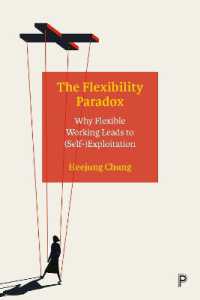- ホーム
- > 洋書
- > 英文書
- > Computer / General
Full Description
The 3-volume set CCIS 2552 - 2554 constitutes the proceedings of the 17th Mexican Conference on Artificial Intelligence, COMIA 2025, which took place in Mexico City, Mexico, during May 12-16, 2025. They were organized in topical sections as follows:
Part I: Natural languages processing;








